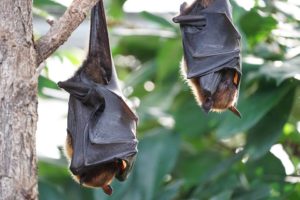Mailing List
To help us keep you updated with our handy guides and other useful news, please consider signing up to our mailing list.
It's quick and easy, and we promise not to send you spam or share your details with third parties.

This weekend (25-26 August 2018) is International Bat Weekend so what better time to focus on these significant creatures and explore their relationship to the world of property!
Summer is the season when bats are active and out of hibernation with the warm summer nights seeing bats at their busiest. Although these little creatures of the night can be feared due to their supposed vampiric tendencies, they aren’t naturally aggressive and are an important part of the ecosystem. In fact, they have much more to fear from humans than we from them.
 Bats have always roosted in buildings and dwellings, but this is more common now that natural roost sites are becoming rarer due to development and change of use. When developing a property, if a bat roost is discovered while development or renovation is underway, all work must be stopped immediately and the relevant Statutory Nature Conservation Organisation (SNCO) must be contacted. Bats are protected by law, and it is an offence to kill, injure or capture one. Bat breeding or resting places cannot be obstructed or destroyed, or a prison sentence and/or fine can result. Clearly, their discovery must be taken seriously because bats are very vulnerable to human activities. If bats are discovered or suspected you will need to carry out a bat survey, and this can take some time, especially if the bats are in hibernation. If it is agreed that there is no threat to biodiversity, planning permission should be approved and you can resume development. However, the development may temporarily be brought to a halt whilst a plan for mitigating the impact of the proposed work on the bats can be agreed.
Bats have always roosted in buildings and dwellings, but this is more common now that natural roost sites are becoming rarer due to development and change of use. When developing a property, if a bat roost is discovered while development or renovation is underway, all work must be stopped immediately and the relevant Statutory Nature Conservation Organisation (SNCO) must be contacted. Bats are protected by law, and it is an offence to kill, injure or capture one. Bat breeding or resting places cannot be obstructed or destroyed, or a prison sentence and/or fine can result. Clearly, their discovery must be taken seriously because bats are very vulnerable to human activities. If bats are discovered or suspected you will need to carry out a bat survey, and this can take some time, especially if the bats are in hibernation. If it is agreed that there is no threat to biodiversity, planning permission should be approved and you can resume development. However, the development may temporarily be brought to a halt whilst a plan for mitigating the impact of the proposed work on the bats can be agreed.
It’s not uncommon to hear about bats being found roosting in homes and buildings, and this tends to unnerve people, especially when they discover bats can carry disease. Although rare, bats can carry rabies – a bat was found in July this year (2018) with rabies in the UK. For this reason, if you find a bat, don’t touch it with your bare hands and contact the Bat Conservation Trust who will advise you on how to deal with it. Remember though, there is a very little risk to humans from bats flying and roosting in property, and healthy bats will avoid human contact.
It’s important to remember that bats are also a significant factor in the food chain. They are actually ‘indicator species’ because alterations in their populations can indicate changes in overall biodiversity. Bats are voracious predators of nocturnal insects, and this includes many pests that pose a threat to farmers and their crops, as well as an annoyance to the rest of us. UK bats do not bite or suck blood! But they do love mosquitoes. Bats also pollinate many flowers and crops and over 500 plant species rely partially or wholly on bats to pollinate them. Bats are great at dispersing seeds as they move around often. All of these help the ecosystem hugely, and without their pest control and pollination farmers would have a significantly harder time maintaining and producing crops.
Evidently, these small but significant creatures are an important part of the ecosystem and are protected by laws, especially when it comes to planning and developing buildings. However, they shouldn’t be feared and are an integral and necessary part of life on earth.
Eleanor Rattay is a Partner and Solicitor specialising in Commercial Property at BHW Solicitors. She can be contacted on 0116 281 6224 or email eleanor.rattay@bhwsolicitors.com.
Categorised in: Agriculture, Blog, Commercial Property
Tags: Agricultural Law, Bats, Construction, Farming & Agriculture, New Build Homes